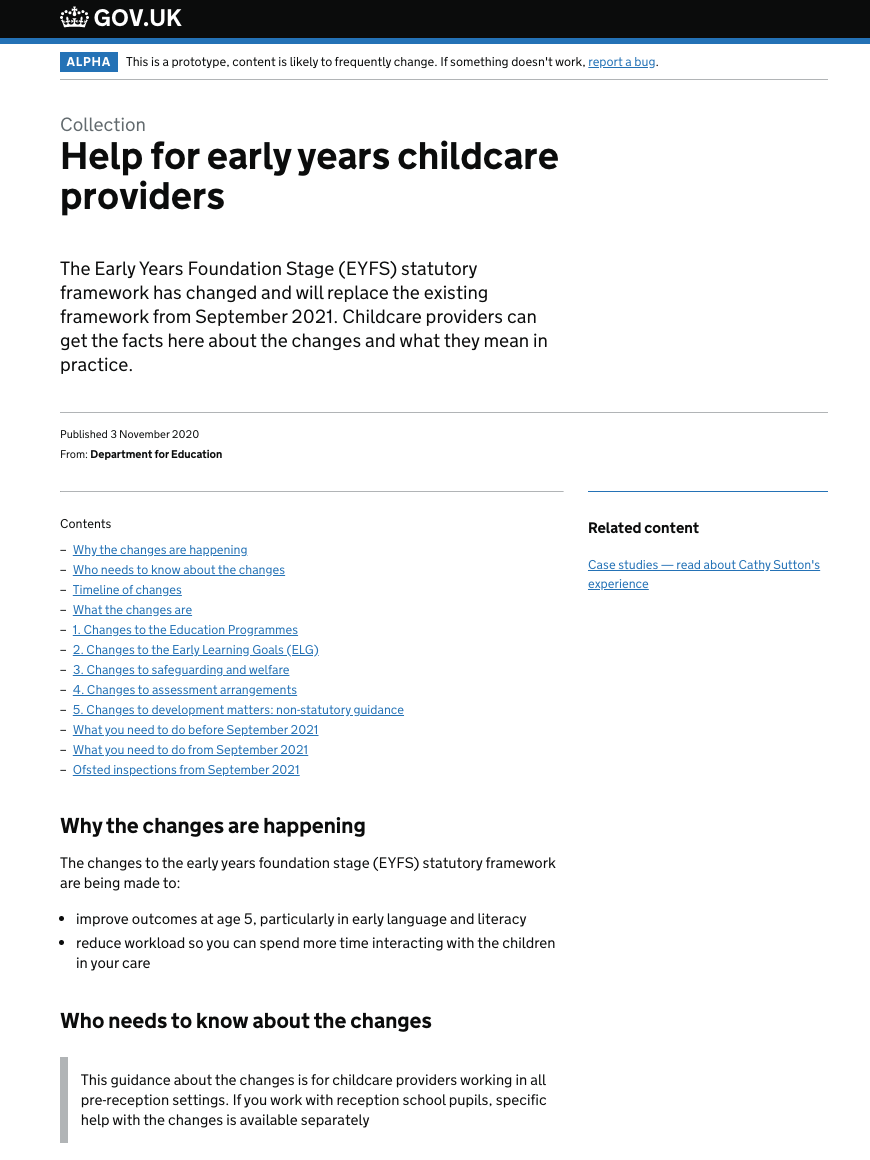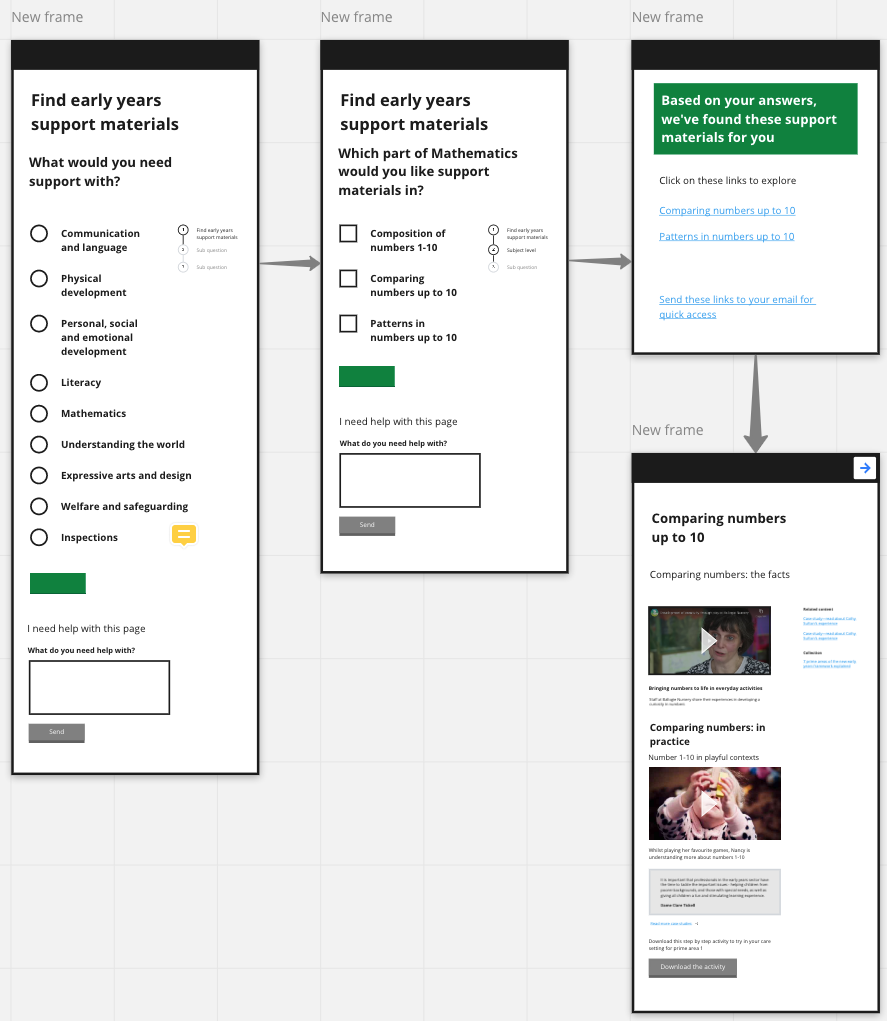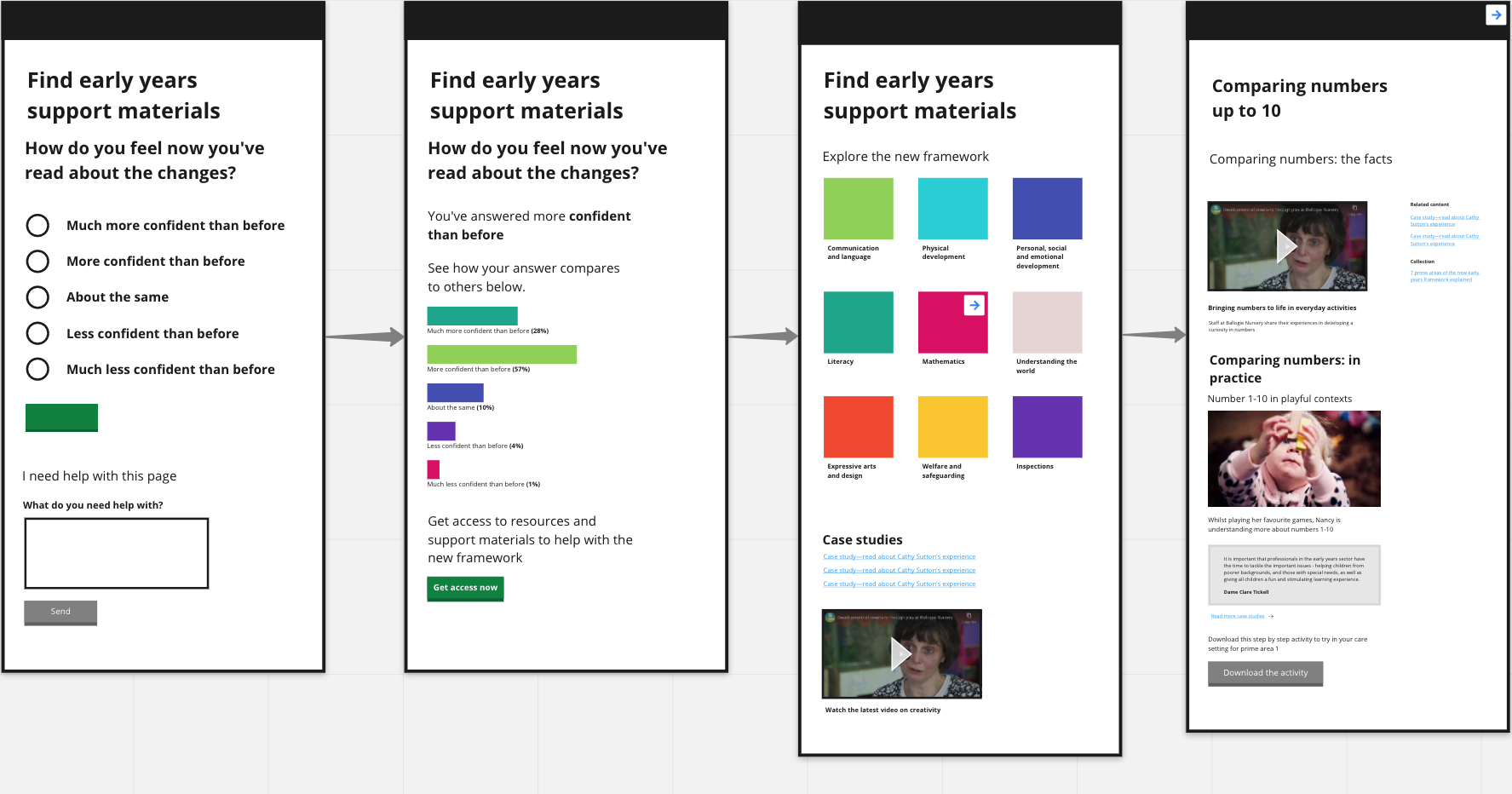Focus for sprint two involved around:
- gathering insights from discovery and pre-alpha
- planning ideation session based on our riskiest assumptions and hypothesis
- running crazy 8 session with the whole team
- developing low-fi prototype
- working with UR to define testing goals
# Design artefacts
# Guidance document – version 1

# Hypothesis to validate
We believe that [vast majority of] practitioners will need a user-friendly written guide to the reforms to enable them to understand what the changes mean to them.
# User need
I need to know what the changes mean for me and my role so that I am able to do something about it and be ready for Ofsted.
# Practical support – concept A (v1)

# Hypothesis to validate
We believe that practitioners need help identifying areas they need additional support in.
# Underlying user need
I need to be able to easily find and access relevant guidance and training so that I know what is good quality and suitable for me.
# Practical support – concept B (v1)

# Hypothesis to validate
We believe that [some] practitioners need practical support on the specific parts of the framework that have changed in order for them to implement the changes.
# Underlying user need
-
I need a source of support so that I can learn from other settings and managers and I don’t feel isolated
-
I need guidance and training to be free so that I am not prevented from accessing it
# User insights
-
PVIs are more familiar with the language and tone of the content and therefore found it easier to digest compared with childminders. Clarifications within the text should improve childminders’ comprehension.
-
Users need explanations and illustrations for the reforms; to put it into practice they need to know the what and the why. This is crucial given the tight timetable, limited awareness and the amount of resource currently dedicated to the implications of Covid-19.
-
There is no one size fits all for Early Years providers in terms of how information is most usefully received. Visual examples of how the reforms might look in practice are important but so too is text based information which can be printed off. We should be careful not to focus on one to the exclusion of the other.
-
The theory behind the reforms is a key piece of missing information for PVI managers and some childminders, which has the effect of limiting their motivation and inspiration.
-
There is a clear desire for training around the reforms and PVI users have already sought this (often unsuccessfully). The quality of this training, and for it to demonstrate equality of access, is more important than who provides the training.
-
Users want training that is not passive. This should not be confused with interactivity without obvious purpose: users do not see the benefit of a quiz.